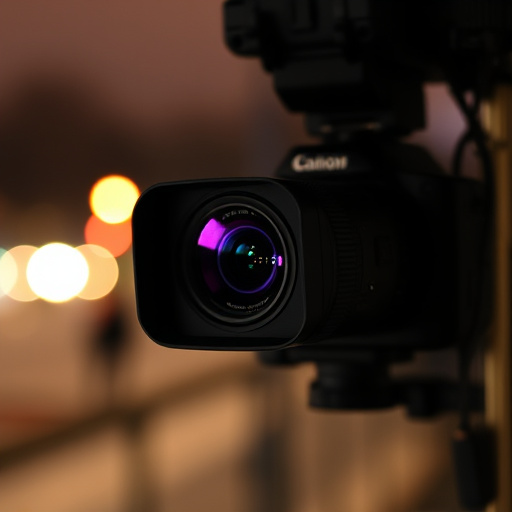Glint detection is a vital feature in night photography for security applications, using advanced algorithms to mitigate unwanted glare from reflective surfaces like shiny objects or wet roads. This process enhances visual clarity in spy camera footage stored in the cloud, ensuring crucial details remain clear and discernible. Modern spy cameras with cloud storage leverage machine learning to overcome lens glints in low-light conditions, enabling remote monitoring and advanced analytics for security professionals and law enforcement. Effective glint detection techniques rely on computer vision algorithms and machine learning models that differentiate between genuine light sources and unwanted glints from hidden surveillance devices, optimizing cloud storage for real-time analysis and proactive security measures.
Uncover the secrets of enhancing night-time photography with our in-depth guide. We explore the art of glint detection, a game-changing technique that transforms low-light imaging. From understanding the science behind capturing subtle reflections to delving into the technology of spy cameras with cloud storage, we provide a comprehensive overview. Learn how advanced algorithms and innovative methods can help you master night photography, revealing hidden details in darkness.
- Understanding Glint Detection in Night Photography
- The Technology Behind Spy Camera with Cloud Storage
- Implementing and Enhancing Glint Detection Techniques
Understanding Glint Detection in Night Photography
Glint detection is a critical component in night photography, particularly for security applications where a spy camera with cloud storage might be employed. In low-light conditions, reflective surfaces like shiny objects or wet roads can cause unwanted glare, known as glints, that degrade image quality and obscure details. Advanced algorithms are now used to identify and mitigate these glints, enhancing the overall visual clarity of nighttime images.
This process involves analyzing each pixel in an image to detect sudden changes in brightness, which often indicate the presence of a glint. Once identified, these pixels can be selectively adjusted or masked to reduce the glare’s impact. Effective glint detection not only improves picture quality but also ensures that crucial details captured by spy cameras—which are designed for discreet and continuous monitoring—are clear and discernible in the resulting footage stored in cloud systems.
The Technology Behind Spy Camera with Cloud Storage
Modern spy cameras, often equipped with cloud storage capabilities, represent a significant evolution in surveillance technology. These devices leverage advanced image processing algorithms and machine learning to detect and mitigate lens glints—a common issue in low-light conditions where external light sources reflect off the camera lens, introducing unwanted artifacts into the footage. By continuously analyzing incoming video streams, these cameras can identify the subtle patterns associated with glints and either blur or mask them in real time, ensuring clear and unaltered images.
The integration of cloud storage further enhances the capabilities of spy cameras. Footage captured can be automatically uploaded and stored remotely, providing easy access to recorded data from virtually anywhere. This not only facilitates remote monitoring but also enables advanced analytics and historical review, making it a powerful tool for security professionals, law enforcement, and individuals seeking robust surveillance solutions.
Implementing and Enhancing Glint Detection Techniques
Implementing effective glint detection techniques is a multifaceted process, especially in low-light conditions where subtle reflections can be hard to discern. Advanced algorithms and computer vision play a pivotal role in enhancing this capability. By utilizing machine learning models, the system can analyze vast amounts of image data to identify and differentiate between genuine light sources and unwanted glints from hidden spy cameras or other surveillance devices.
Incorporating cloud storage further optimizes the process. Images captured by security cameras with cloud backup enable real-time analysis and remote monitoring. This allows for quick detection of suspicious glints, even when access to the camera is limited, ensuring a proactive approach to securing private spaces from covert surveillance.
In conclusion, advancements in spy camera technology, particularly those equipped with cloud storage, have significantly enhanced night photography. By understanding glint detection and implementing improved techniques, photographers can now capture clearer, more detailed images even in low-light conditions. These innovations not only revolutionize surveillance but also open new creative avenues for night-time imaging. The combination of glint detection and cloud storage enables efficient data management and real-time access, making it a game-changer for various applications.
